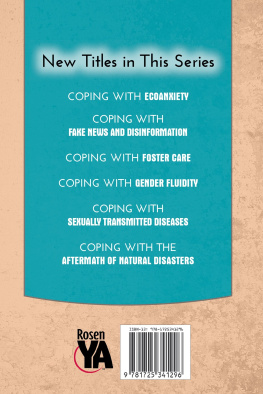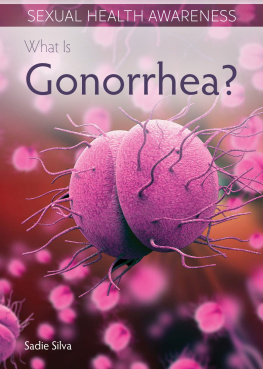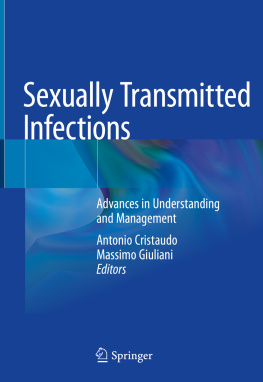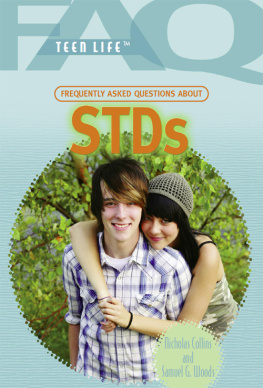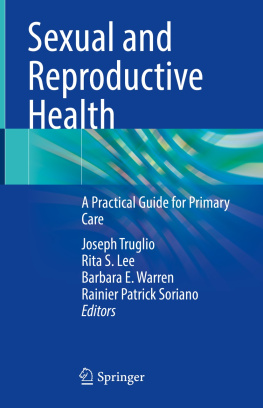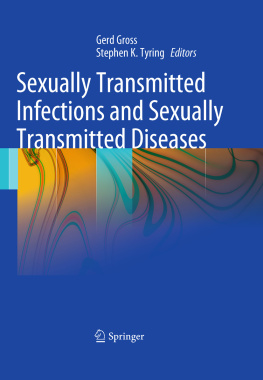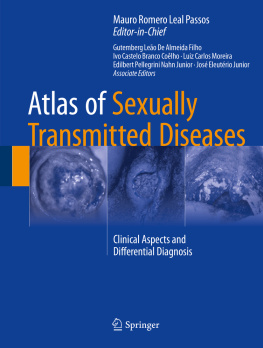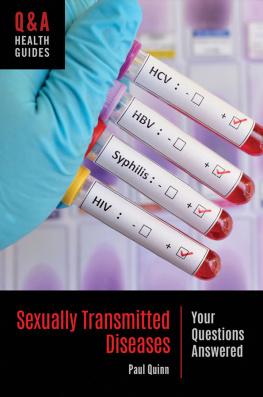
To all of the sexual health activists who have made it their work to end the negative stigma associated with having an STD and for providing educational information to empower people through their diagnosis
Published in 2020 by The Rosen Publishing Group, Inc.
29 East 21st Street, New York, NY 10010
Copyright 2020 by The Rosen Publishing Group, Inc.
First Edition
All rights reserved. No part of this book may be reproduced in any form without permission in writing from the publisher, except by a reviewer.
Library of Congress Cataloging-in-Publication Data
Names: Parrish, Jacqueline, author.
Title: Coping with sexually transmitted diseases / Jacqueline Parrish.
Description: First edition. | New York: Rosen Publishing, 2020. | Series: Coping | Audience: Grades 712. | Includes bibliographical references and index.
Identifiers: LCCN 2019013376| ISBN 9781725341296 (library bound) |
ISBN 9781725341289 (pbk.)
Subjects: LCSH: Sexually transmitted diseasesJuvenile literature.
Classification: LCC RC200.25 .P37 2020 | DDC 616.95dc23
LC record available at https://lccn.loc.gov/2019013376
Manufactured in the United States of America
On the cover: Being diagnosed with an STD can make you feel confused and alone. The most important thing you can do is thoroughly educate yourself about your condition. It is possible to live a happy life and enjoy healthy sexual relationships.
DISCLAIMER: Some of the images in this book illustrate individuals who are models. The depictions do not imply actual situations or events.
CONTENTS
INTRODUCTION
T he United States has become the country with the highest rate of sexually transmitted diseases (STDs) in the industrialized world, according to David Harvey, executive director of the National Coalition of STD Directors (NCSD). The burden of STDs is also a global problem as there are roughly 357.4 million new infectionsabout one million cases per day according to the World Health Organization (WHO). There are also roughly 500 million people around the world who have herpes and an estimated 290 million women who have human papillomavirus (HPV). According to a February 2019 article on WHO.int, More than 1 million sexually transmitted infections (STIs) are acquired every day worldwide. Each year, there are an estimated 357 million new infections with 1 of 4 STIs: chlamydia, gonorrhea, syphilis and trichomoniasis.
Teenagers represent the highest number of STD cases per year, and per the Centers for Disease Control and Prevention (CDC), roughly half of the 19.7 million cases are people between the ages of fifteen and twenty-four. In the book Sexually Transmitted Diseases: Your Questions Answered, author Paul Quinn states, Regardless of advances in science, technology, or pharmaceuticals, an estimated 19.7 million STDs are diagnosed each year in the United States alone. This translates, then, to mean that approximately 1 out of 4 teens will contract an STD.

If youre sexually active, take control of your sexual health by getting an STD test. STD tests are often quick, confidential, and painless and can be administered free of charge.
Increases in STD occurrences can be attributed to many factors, such as the rise in sexual activity among teenagers and the ways in which social media makes it easy to explore sexuality through research, sexting, and/or pornography. It can also be attributed to a lack of prevention and treatment. According to Alexandra Sifferlins Time article, Only 22 states and the District of Columbia mandate both sex education and HIV human immunodeficiency virus] education, and many schools provide an abstinence-only curriculum. Sex-education classes often focus largely on preventing unintended pregnancies and less on preventing infections. Finally, the increase in STD occurrences can be attributed to teens not knowing they are infected and engaging in sexual activities. Some STDs manifest no immediate outward symptoms, which causes carriers to think they are healthy and continue to engage in sexual activity. HIV is one such example of an STD that does not show immediate symptoms. According to Basic Statistics on CDC.gov, An estimated 1.1 million people in the United States had HIV at the end of 2016, the most recent year for which this information is available. Of those people, about 14%, or 1 in 7, did not know they had HIV.
If you have been diagnosed with an STD, it is important to remember that you are not alone. STDs are very common, and studies have shown that those who are sexually active will contract at least one STD during their lifetime. Educate yourself on how to cope with an STD diagnosis and why testing (also known as STD screening) is important if you plan to be sexually active. Discover the many resources that are at your fingertips to guide you through the process of coping with an STD. Find out where you can turn for help, how to get proper treatment, and how to live a healthy lifestyle in the wake of an STD diagnosis.
CHAPTER ONE
Youre Not Alone
S TDs are diseases that are passed from person to person via blood, vaginal fluid, or semen during a vaginal, anal, or oral sexual act or pregnancy and childbirth. CDC.gov notes that you do not have to have sexual intercourse to contract an STD. Herpes and HPV, to name a couple, are spread through skin-to-skin contact.
What Are the Different STDs?
There are a variety of STDs, some with immediate symptoms and others that show up much later. This makes it very important to get tested if you are, or plan to be, sexually active.
Chlamydia, Gonorrhea, and Trichomoniasis
Chlamydia and gonorrhea are bacterial infections that can be easily treated with a prescription antibiotic. Trichomoniasis is a parasitic STD, meaning it lives off another host organism, that is also easily treated with medication. Symptoms can include pain during urination, discharge from the vagina, penis, or anus, and lower belly pain.
Pubic Lice
Pubic lice, also known as crabs or pediculosis pubis, are tiny insects that live in pubic hair. They are spread through sexual contact, and symptoms include itchiness, redness, and irritation in the genital region. Condoms and dental dams do not protect against pubic lice, but it is easily treatable with a medicated cream, shampoo, or lotion that can be purchased over-the-counter at a local pharmacy.

Pubic lice are parasitic insects that attach to coarse hair near the pubic region, eyelashes, chest hair, armpits, and facial hair. They suck blood from their hosts, which causes irritation.
Trichomoniasis
Trichomoniasis is a parasitic STD that manifests almost no symptoms. According to the CDC, trichomoniasis is the most common curable STD. Only 30 percent of people with trichomoniasis experience symptoms, which might include itching and irritation in the genital area, pain during urination, and/or discharge from the penis or vagina. Medication is prescribed for trichomoniasis, and it is suggested that you wait at least one week before engaging in sexual activity.
Syphilis
Syphilis is an STD that is usually accompanied by sores in the genital area. In the first stage of syphilis, the sores are generally painless, are present a few weeks after sexual intercourse, and can disappear without the presence of other symptoms. The second stage of syphilis develops a few weeks after the sores appear. It can include a rash and flu-like symptoms, such as fever, tiredness, muscle aches, and swollen lymph nodes. If caught early, syphilis is easily treated with penicillin. If left untreated, it can be life threatening, eventually affecting the brain, heart, eyes, or nerves.
Next page
